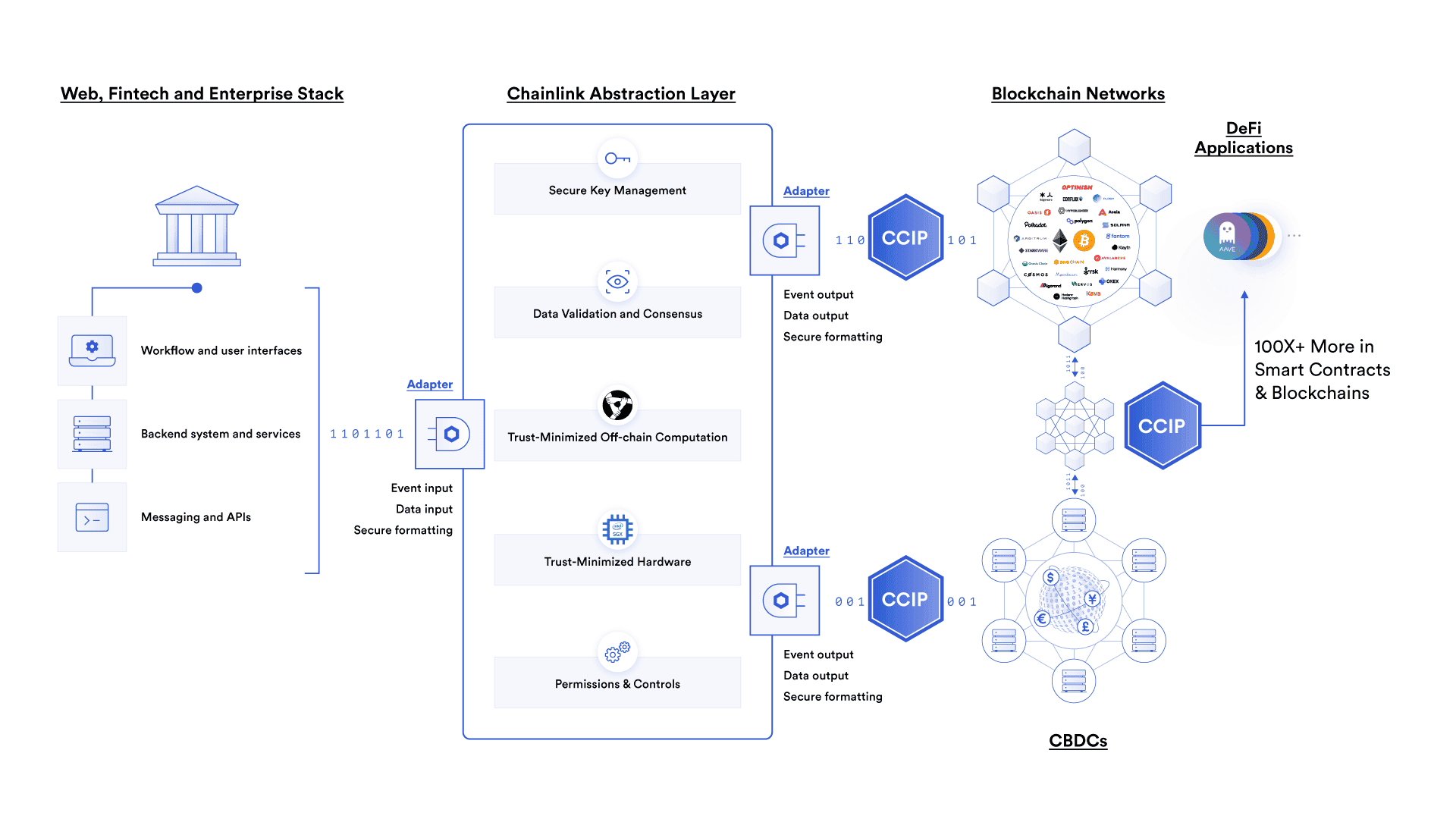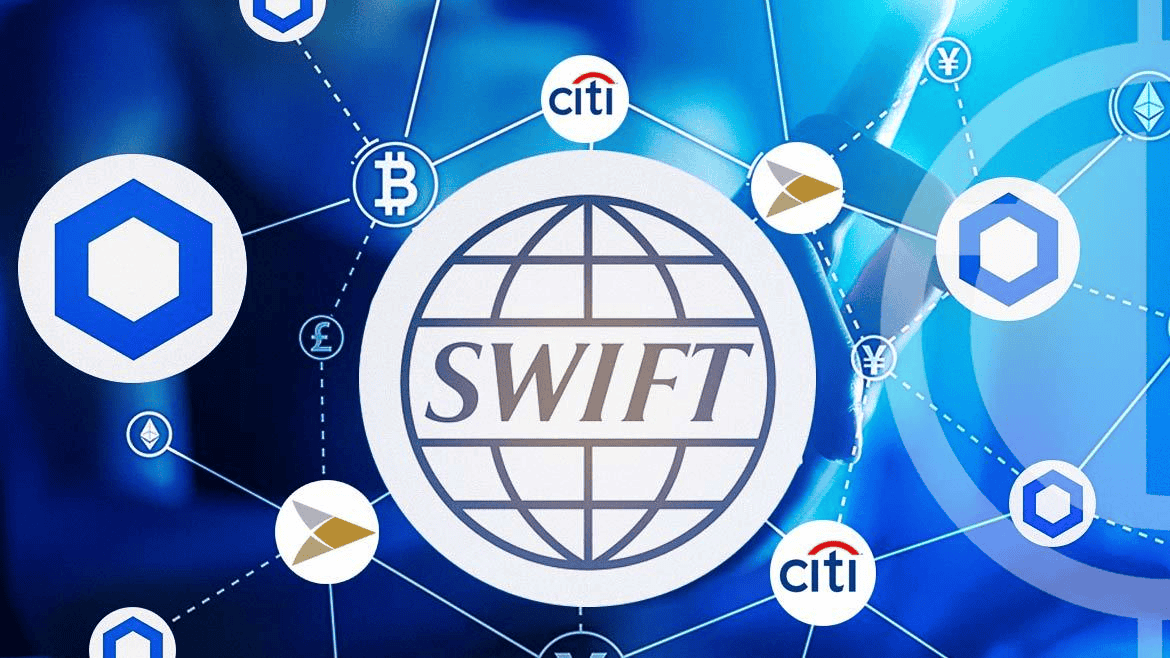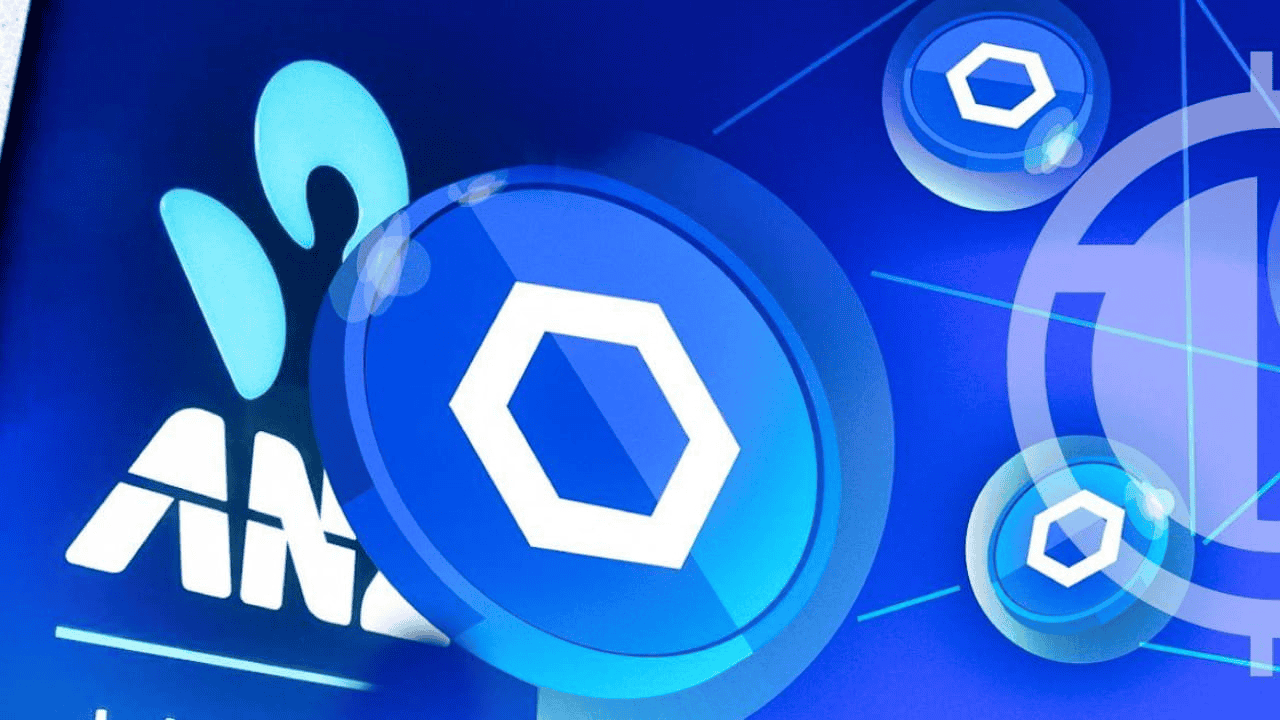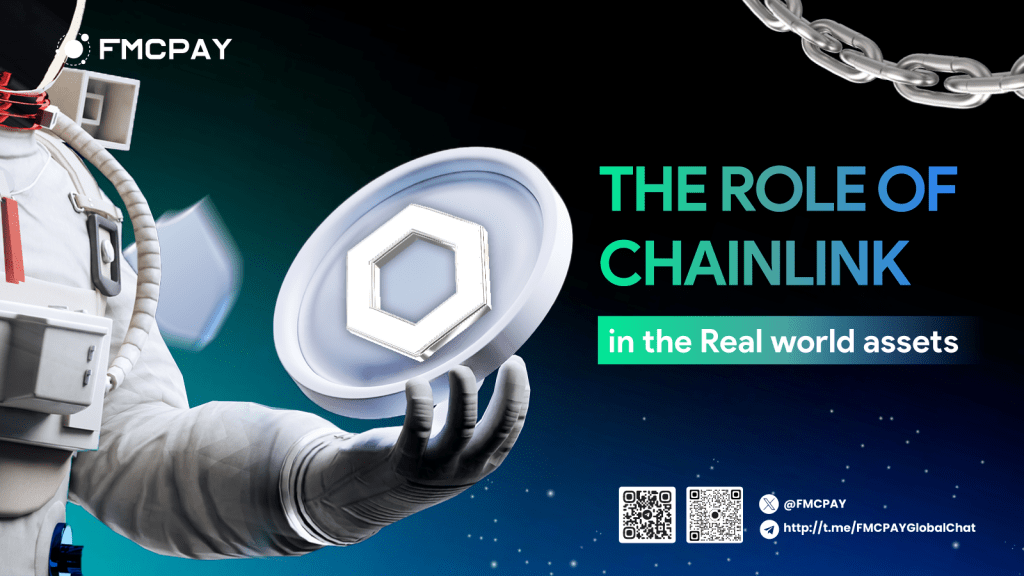Real world assets is one of the concepts that have been mentioned continuously in recent day because of their growth and attraction to investors, not only on the defi market but also institutional investors in the tradFi market. Chainlink is a very important piece of the puzzle in the niche and why RWA could not be realized without pieces like Chainlink
1. What is Chainlink
Chainlink is a decentralized Oracle network founded in 2017 on Ethereum and consistently at the top of the Oracle niche with over $4 billion in market capitalization.
Chainlink has positioned itself as a critical piece of infrastructure to connect blockchains to the outside world by providing real-world data for smart contracts on the blockchain. And vice versa, people can also send data to parties outside the blockchain through the Chainlink Network.
In short, Chainlink is seen as a bridge, providing and connecting data between blockchain and real-world off-chain information.
Until now, Oracle has always played an extremely important part in most blockchain projects including DeFi, GameFi ,… And Chainlink almost holds the largest market share in the niche as the database for most major blockchain projects.
Recently, Chainlink has officially entered the Real World Assets race as one of the pioneers, supporting traditional financial institutions to experiment with bringing real-world assets to the blockchain, gaining access to the DeFi space.

2. What is Chainlink’s role in bringing Real world assets into the DeFi space?
Chainlink is the core infrastructure that capital markets need to be able to accelerate the tokenization of real assets on the chain. Chainlink’s positioning is clear as it moves towards providing an enterprise-grade solution that enables financial institutions in the traditional market to make the necessary connections between blockchains (on-chain) and their existing infrastructure (off-chain).
Chainlink provides a suite of services, which help support the transfer of data and tokens between different blockchains through its CCIP, two-way communication between the blockchain and the external system. This suite of services includes:
- Cross-Chain Interoperability Protocol (CCIP): This is a cross-chain protocol that serves as the transfer of data and tokens between any public or private blockchain.
- Proof of Reserve: It is a network of decentralized networks that help verify and authenticate off-chain assets, supporting transparency and clarity for putting those assets on the chain.
- Function: A way for external financial institutions to serve any on-chain asset, by synchronizing events, off-chain data to trigger on-chain actions of that asset.

3. How is Chainlink involved in the tokenization of Real world assets on-chain?
Recently, Chainlink is showing its role in RWA by actively collaborating and participating in supporting traditional financial institutions to internally experiment with putting real assets on the chain.
Chainlink partnered with Swift and 10 other major banks to complete the pilot process of putting real assets on the chain
Recently, Swift- International Association for Interbank and Financial Telecommunication, which provides services related to the execution of financial transactions and payments between banks worldwide with a system consisting of more than 11,000 financial institutions, has partnered with Chainlink and 10 other major banks. These banks include Citibank, BNY Mellon, BNP Paribas, Clearstream, Euroclear, Lloyds Banking Group, SIX Digital Exchange (SDX),…
The goal of this test is to explore the process of tokenizing real assets onto the blockchain and implement a secure token exchange between major financial institutions and different blockchains.
This test has already been launched on the Sepolia network and several other blockchains.
This partnership is designed to demonstrate how Swift can use Chainlink’s enterprise Abstraction layer to facilitate the transfer of tokenized assets: between two wallets on the same public blockchain; between a public blockchain and a private blockchain; and between two public blockchains. The results are expected to be announced later this year.
This partnership demonstrates Chainlink’s role quite clearly and emphasizes the need for a cross-chain communication standard, allowing traditional financial institutions to perform the transfer and expansion of the encrypted asset space in a multi-chain economy.

Chainlink assists ANZ Bank in testing cross-chain crypto asset transfer
ANZ, one of Australia’s largest institutional banks, has been experimenting with cross-chain crypto asset transfer through Chainlink’s CCIP.
The bank worked with the Chainlink Cross-Chain Interoperability Protocol (CCIP) to simulate the purchase of tokenized assets using the A$DC stablecoin issued by the bank itself.
The trial yielded successful results, with ANZ participating in a number of trials, including:
- Issuing a reference stablecoin of the Australian dollar (AUD) on a permissionless public blockchain, known as A$DC
- ANZ tokenised the Australian Carbon Credit Unit (ACCU) on the public blockchain mainnet and Grollo Carbon Ventures (GCV)
This development shows that Chainlink’s CCIP plays a very important part in the bank’s ability to transfer funds on both open and private blockchain networks, while testing the effectiveness and security of real-world asset deployments on-chain.
ANZ, one of Australia’s largest institutional banks, has been experimenting with cross-chain crypto asset transfer through Chainlink’s CCIP.
The bank worked with the Chainlink Cross-Chain Interoperability Protocol (CCIP) to simulate the purchase of tokenized assets using the A$DC stablecoin issued by the bank itself.
The trial yielded successful results, with ANZ participating in a number of trials, including:
Issuing a reference stablecoin of the Australian dollar (AUD) on a permissionless public blockchain, known as A$DC
ANZ tokenised the Australian Carbon Credit Unit (ACCU) on the public blockchain mainnet and Grollo Carbon Ventures (GCV)
This development shows that Chainlink’s CCIP plays a very important part in the bank’s ability to transfer funds on both open and private blockchain networks, while testing the effectiveness and security of real-world asset deployments on-chain.

4. Conclusions
Chainlink is an important piece of the puzzle in providing infrastructure, which is a necessary condition for RWA to be realized in bringing on-chain and applications into the DeFi space. Currently, it can be seen that most large traditional financial institutions are showing quite a lot of interest in the application of blockchain and the transformation of cash flows from the traditional market to the decentralized financial system DeFi.
As we can see, most of these organizations go in two directions quite clearly. One is to build and develop its own internal blockchain network and infrastructure to start experimenting with putting real-world assets on chain. The second will be to partner with a third party capable of providing technology and infrastructure for feasibility testing. And Chainlink has always been one of the top choices of these companies.
Currently, those who own $LINK can stake to get back the reward of the token itself $LINK. In the future, when the trial is successful and formalized, all institutional transactions using Chainlink’s CCIP will use LINK as a means of payment, significantly increasing the application of $LINK token.
Hope the above article provides useful knowledge for everyone.
Explore latest news here: FMCPAY Insight

